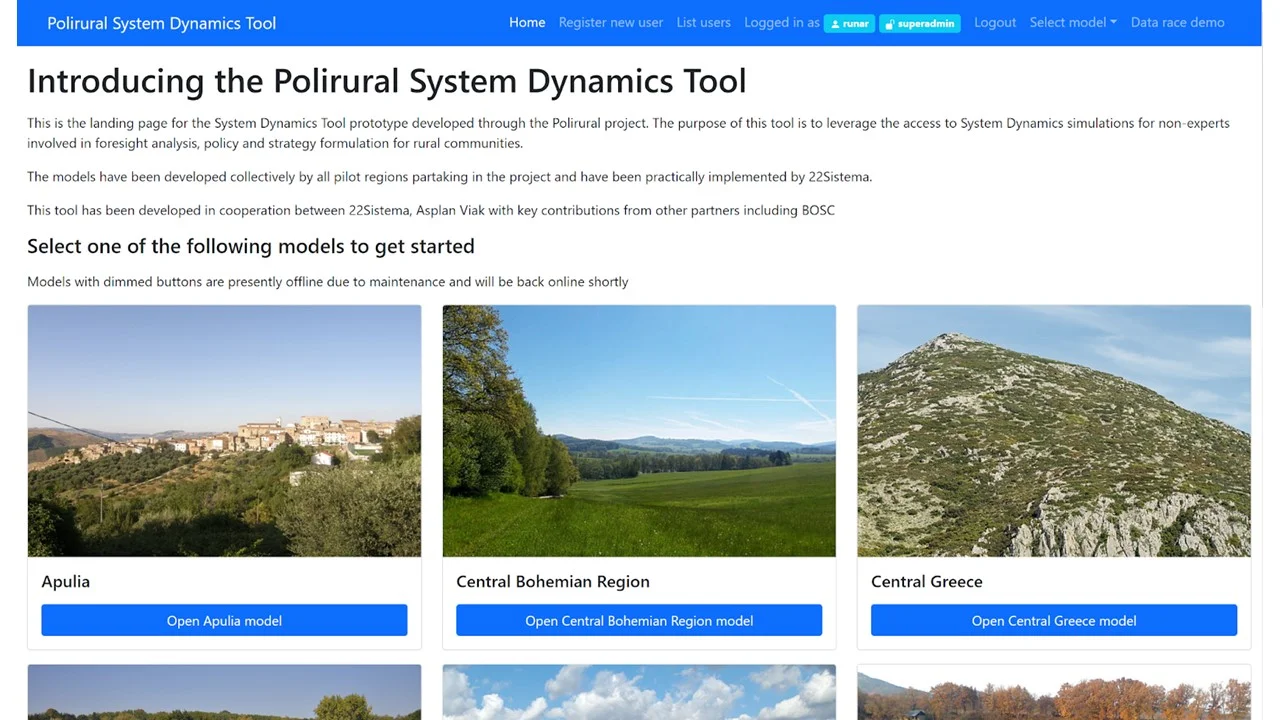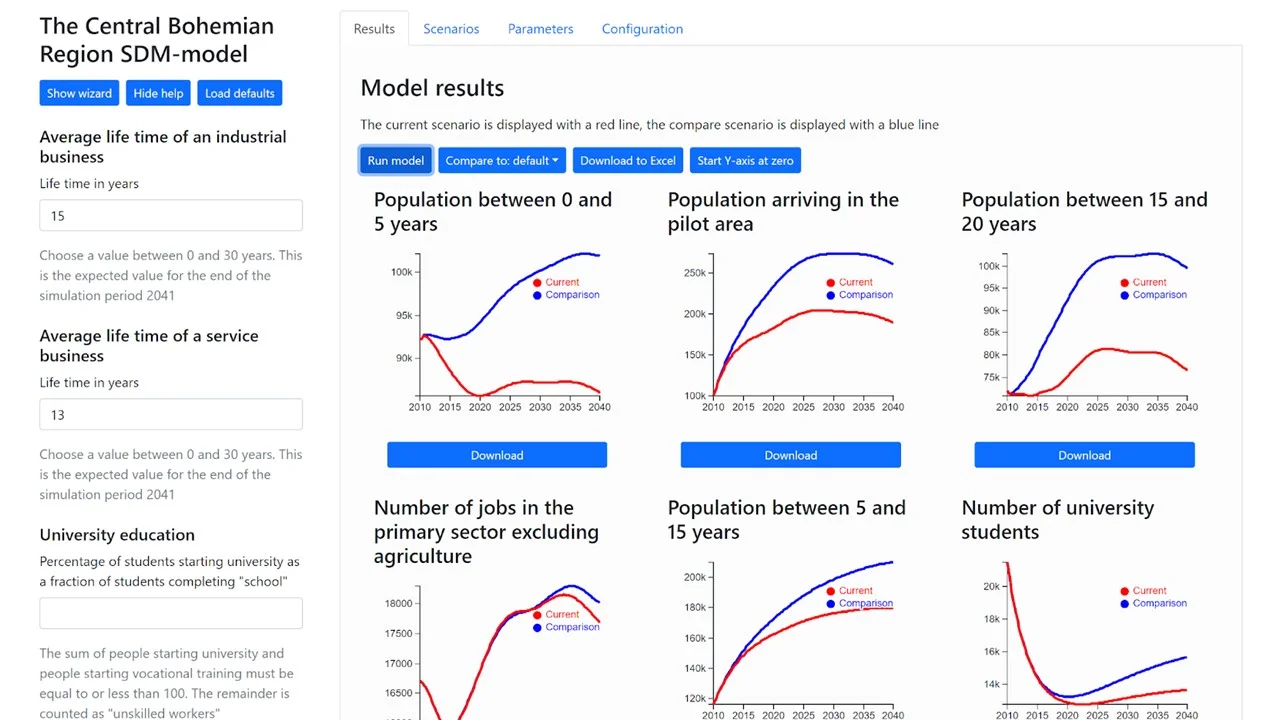PoliRural Policy Options Explorer (POE)

State-of-the-art
The Policy Option Explorer that was created in the first PoliRural project is a generic framework for executing System Dynamics models in a web environment. The POE offers the user a model that displays a number of output variables from the underlying model to the user. These are shown as diagrams that depict the development from the start date of the model and a configurable number of years into the future. At the same time, the POE displays a set of input parameters/variables that are used to execute the model. These are pre populated with the default values from the model, but the user can tweak them and see how changes in the parameters will affect future outcomes — subject to the limitations of the underlying equations.
Let us imagine a model where the outputs include forecasted population data, tax revenue, health and education expenses. Let us similarly imagine that the same model includes inputs such as investment into infrastructure or information technology, birth rate and migration rate. With such a model, a municipality or province would be able to simulate the potential impact of their investments on a longer time-frame. Due to the complexity of the underlying models and the work required to feed the models with the detailed data from each participating region in the previous Polirural project, the solution was not widely used for policy analysis of formulation. However, the application framework remains available with new and simpler models that can aid in decision support in rural development processes within the scope of PoliRuralPlus.
Public sector has adopted a lot of systems for data collection and visualisation, but simulation and forecasting relies heavily on manual work—as it must. However, it is intriguing though that the POE has the potential to increase government capacity to do such forecasts by allowing coarse filtering of many different policy and investment scenarios before 3-5 are selected for further refinement. As the process is today, too often choice comes down to three options: doing nothing, doing something and doing everything. Since there is little political capital being gained from inaction or bankruptcy, that leaves a grand total of one option and poses an interesting question about democracy and policy development versus decision making.
Technically, the POE is built on the following open standards and technology components:
- System dynamics, a method and notation for describing complex processes and how they interact with one another
- XMILE, the open XML-standard for exchange of system dynamics models
- PySD, an open source library for translating XMILE models to executable Python code
- OpenAPI, a standard for publishing and documenting Web APIs
- React, a Javascript framework for development of end-user clients to run in the browser
It is capable of executing any system dynamics model and is not reliant explicitly on the ones developed in PoliRural.
PoliRuralPlus objectives for extension
In PoliRural the ambition was to make models that described the pilot regions comprehensively based on real data. Having learned that that approach was too time-consuming and left the planners scratching their heads at the finished model,the potential for the POE in PoliRuralPlus is in using it to execute other models.
At the time of writing, the thought is to see if it is possible to build a set of simpler, generic models that can be used to “game” development of a municipality rather than force municipalities or provinces to collect so much data at such effort that it would have been cheaper to outsource the whole thing.
